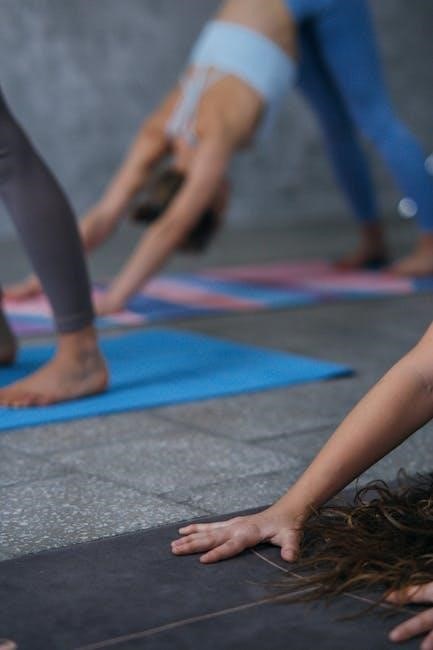Printable math exercises for 2nd grade primary students offer a convenient and engaging way to develop essential skills in addition, subtraction, multiplication, and problem-solving. These resources, available as PDFs, provide structured practice for young learners, helping them build confidence and fluency in math. Ideal for both home and classroom use, they cater to diverse learning needs and styles, ensuring a strong foundation in early math education.
Importance of Printable Resources in Early Math Education

Printable math resources for 2nd grade play a vital role in early education by providing structured, engaging exercises that reinforce essential skills. These materials offer a hands-on approach, making learning interactive and fun. Parents and teachers can easily access and print these resources, ensuring consistent practice at home or in the classroom. Printable exercises also allow for personalized learning, catering to individual pacing and needs. They help build confidence and fluency in math concepts, preparing students for more complex topics. Additionally, these resources often include answer keys and progress tracking tools, enabling effective assessment and support for young learners.
Overview of 2nd Grade Math Curriculum
The 2nd grade math curriculum focuses on building foundational skills in arithmetic, problem-solving, and real-world applications. Key areas include addition and subtraction within 100, basic multiplication and division concepts, and understanding of word problems. Students also explore geometry through shape recognition and basic measurements, such as time and length. Printable exercises play a crucial role in reinforcing these concepts, offering structured practice that aligns with curriculum goals. These resources help students develop accuracy and confidence, ensuring a solid math foundation for future learning. Regular practice with these materials supports both classroom instruction and independent study, making them an essential tool for young learners.

Key Topics Covered in 2nd Grade Math Exercises
Exercises cover addition, subtraction, basic multiplication, division, word problems, geometry, and measurement, providing a comprehensive foundation for young learners to master essential math skills effectively.
Addition and Subtraction Basics
Printable math exercises for 2nd grade focus on mastering addition and subtraction, essential skills for early math development. These exercises often include simple arithmetic problems, word problems, and visual aids like number lines or counting blocks to help students understand concepts. Worksheets are designed to build fluency in basic facts and promote problem-solving strategies. Many resources incorporate real-world scenarios, making learning relatable and fun. Exercises progress from single-digit to multi-digit numbers, ensuring a smooth transition to more complex operations. Correction keys are frequently provided, allowing parents and teachers to assess progress and accuracy effectively. These tools are invaluable for reinforcing foundational math skills in a structured and engaging manner.
Printable math exercises for 2nd grade introduce multiplication and division through engaging and interactive activities. These resources use visual models, such as arrays and repeated addition, to help students grasp basic concepts. Division is often introduced using sharing and grouping strategies, making it relatable. Worksheets include simple problems, word problems, and visual aids to reinforce understanding. Many exercises incorporate real-world scenarios, such as sharing toys or distributing candies, to make learning practical. Correction keys are often provided, enabling parents and teachers to assess progress and accuracy. These exercises lay a strong foundation for understanding the relationship between multiplication and division, preparing students for more advanced math in later grades.
Word Problems and Real-World Applications

Printable math exercises for 2nd grade often include word problems that connect math to real-life scenarios, such as sharing toys, counting animals, or measuring ingredients. These problems help students develop critical thinking and apply math skills to practical situations. For example, exercises might involve calculating the number of biscuits to share equally or determining the number of students in a third class. Such activities make learning engaging and relevant, preparing students to solve everyday problems confidently. Many worksheets include visual aids and simple language to guide young learners, ensuring they understand how math is used in the world around them.
Geometry and Shapes
Printable math exercises for 2nd grade primary students often include geometry and shape recognition activities. These exercises help young learners identify and name basic shapes like squares, circles, triangles, and rectangles. Worksheets may feature tasks such as coloring specific shapes, matching shapes to objects, or completing puzzles. Some exercises also introduce more complex concepts, like recognizing shapes in real-world objects or understanding basic symmetry. These activities are designed to develop spatial awareness and problem-solving skills in a fun and interactive way. By practicing with these exercises, students build a strong foundation in geometry, which is essential for advanced math concepts in later years.
Measurement and Time Concepts

Printable math exercises for 2nd grade primary students often include activities focused on measurement and time concepts. These exercises help young learners understand basic units of measurement, such as centimeters and inches, and how to compare lengths and weights. Time-related tasks involve telling time on analog clocks, calculating durations, and sequencing events. Worksheets may feature visual aids like rulers or clock faces to make learning interactive. These exercises also introduce concepts like days of the week and months of the year, helping students connect math to real-life scenarios. By practicing these skills, students develop a strong understanding of measurement and time, essential for everyday problem-solving and future math studies.
Recommended Websites for Printable Math PDFs
PopMéninges, Maths-pdf.fr, and Ecole de Mélie offer extensive collections of free printable math PDFs for 2nd grade primary students, covering addition, subtraction, and problem-solving exercises.
PopMéninges: Extensive Collection of Free Math Sheets
PopMéninges provides a vast array of free printable math exercises tailored for 1st, 2nd, and 3rd grade primary students. These resources are designed to support learning at home and in the classroom, offering a variety of exercises that cover essential math skills such as addition, subtraction, and problem-solving. The website features exercises with clear instructions and corrections, allowing students to practice independently and track their progress. Parents and teachers can easily download and print these sheets, making them a convenient tool for reinforcing math concepts. With its comprehensive collection, PopMéninges helps students build a strong foundation in mathematics while fostering a love for learning through engaging and structured practice.
Maths-pdf.fr: Comprehensive Resources for Primary Students
Maths-pdf.fr offers a wide range of free, downloadable math resources in PDF format, specifically designed for primary students, including those in 2nd grade. The platform provides detailed courses, exercises, and corrections, covering essential math topics such as addition, subtraction, multiplication, division, and word problems. These resources are ideal for both classroom activities and home learning, allowing parents and teachers to support students effectively. The exercises are structured to help students progress steadily, with clear instructions and answers for self-assessment. Maths-pdf.fr is a valuable tool for reinforcing math skills and ensuring a solid understanding of key concepts, making it a go-to resource for primary education.
Ecole de Mélie: Themed Exercises and Worksheets
Ecole de Mélie provides engaging, themed math exercises and worksheets for 2nd grade primary students, available in PDF format. These resources are designed to make learning fun and interactive, with exercises tailored to match weekly word lists and educational themes. Parents and educators can choose between script or cursive writing versions, catering to different teaching methods. The exercises cover a variety of math topics, including addition, subtraction, and problem-solving, while incorporating creative themes to keep students motivated. This approach ensures that learning is both enjoyable and effective, helping young learners develop essential math skills in a structured and engaging way.

Using Printable Exercises Effectively
Printable math exercises provide structured practice, building confidence and fluency in essential skills. They offer interactive learning, catering to diverse learning styles and educational needs effectively.
Tips for Parents to Support Learning at Home

Parents can effectively support their child’s math learning by creating a structured routine with printable exercises. Start with short sessions to maintain focus and gradually increase duration as confidence grows. Use visual aids like number lines or counters to simplify complex concepts. Encourage children to explain their problem-solving processes to reinforce understanding. Provide immediate feedback and celebrate progress, no matter how small. Incorporate real-world applications, such as measuring ingredients while baking, to make math relatable. Utilize themed worksheets to keep practice engaging and fun. Finally, stay patient and positive, fostering a love for learning that extends beyond the worksheet.
Integrating Worksheets into Classroom Activities
Printable math worksheets can be seamlessly integrated into classroom activities to enhance learning. Teachers can incorporate them into daily routines, such as warm-up exercises or homework assignments. Group work activities using worksheets encourage collaboration and peer learning. Differentiated instruction can be achieved by assigning worksheets tailored to individual skill levels. Interactive tools, like digital versions of worksheets, can be used alongside traditional paper-based exercises. Regular review of worksheet progress helps track student improvement and identify areas needing extra support. Themed worksheets, such as those tied to holidays or real-world scenarios, can make math more engaging. Balancing worksheet practice with hands-on activities ensures a well-rounded educational experience for students.
Encouraging Independent Practice
Printable math exercises for 2nd grade primary students are an excellent tool for fostering independent practice. Parents and teachers can provide structured worksheets that allow children to work at their own pace, reinforcing concepts learned in class. Themed exercises, such as holiday-themed math problems, can make practice more engaging. Offering access to corrections enables students to self-assess and understand their mistakes. Regular independent practice helps build confidence and fluency in math skills. Encouraging students to complete worksheets on their own also teaches responsibility and time management. By integrating these resources into daily routines, parents and educators can support a child’s mathematical development effectively.

Additional Resources and Tools
Interactive online exercises, correction keys, and progress tracking tools complement printable PDFs, offering comprehensive support for math learning at home and in school.

Interactive Online Exercises for Reinforcement
Interactive online exercises provide dynamic ways to reinforce math skills for 2nd graders. Websites like PopMéninges and Maths-pdf.fr offer digital tools with quizzes, games, and real-time feedback. These resources engage students with activities such as arranging numbers in sequence or identifying shapes, making learning fun and effective. Many platforms allow progress tracking, enabling parents and teachers to monitor improvement. Exercises often cover addition, subtraction, multiplication basics, and problem-solving, aligning with curriculum goals. Interactive elements, such as drag-and-drop features and audio guidance, cater to different learning styles. These online resources complement printable PDFs, offering a well-rounded approach to math practice and mastery for young learners.
Corrections and Answer Keys for Accuracy
Corrections and answer keys are essential for ensuring accuracy in math exercises. Websites like Maths-pdf.fr and PopMéninges provide detailed corrections for their printable PDFs, allowing students, parents, and teachers to verify solutions. These resources often include step-by-step explanations, helping learners understand their mistakes. Answer keys cover a wide range of topics, from basic addition and subtraction to more complex multiplication and division problems. They also address word problems and geometry exercises, ensuring comprehensive feedback. By using these tools, students can identify areas for improvement, while educators can assess progress effectively. Accurate corrections foster confidence and mastery, making them a vital component of math education for 2nd graders.
Progress Tracking and Assessment Tools
Progress tracking and assessment tools are invaluable for monitoring student development in math. Websites like PopMéninges and Maths-pdf.fr offer printable PDFs with exercises and corrections, enabling parents and teachers to assess understanding. These resources often include progress tracking features, such as numbered exercises and answer keys, allowing for easy evaluation of strengths and areas needing improvement. Some tools also provide reports or checklists to document student advancement. By using these resources, educators can identify learning gaps and tailor instruction to individual needs. Regular assessments help ensure students stay on track, fostering continuous improvement and confidence in their math skills throughout the 2nd grade year.
Printable math exercises for 2nd grade primary students are a valuable resource, enhancing learning outcomes and fostering a lifelong appreciation for mathematics through consistent practice and fun activities.
Maximizing Learning Outcomes with Printable PDFs
Printable math exercises in PDF format are a powerful tool for enhancing learning outcomes in 2nd grade primary education. These resources provide structured, engaging activities that cater to young learners’ needs, covering essential topics like addition, subtraction, and problem-solving. Websites such as PopMéninges and Maths-pdf.fr offer extensive collections of free, downloadable PDFs, ensuring accessibility for both parents and educators. The exercises are designed to reinforce classroom lessons, promote independent practice, and build confidence in math skills. With clear instructions and answers provided, these PDFs enable students to track their progress and understand their mistakes, fostering a deeper understanding of mathematical concepts and preparing them for future academic success.

Encouraging a Love for Math Through Practice
Engaging in regular math practice with printable PDFs fosters a positive attitude toward learning and helps students develop a genuine interest in mathematics. Themed exercises and interactive activities make math enjoyable, while structured worksheets ensure consistent skill development. Websites like PopMéninges and Ecole de Mélie offer diverse, age-appropriate resources that cater to different learning styles, keeping young students motivated. By incorporating fun elements and real-world applications, these exercises transform math into an exciting discovery process. Consistent practice not only builds confidence but also nurtures curiosity, encouraging students to view math as a rewarding and accessible subject. This early enthusiasm lays the groundwork for lifelong academic success and a love for problem-solving.










